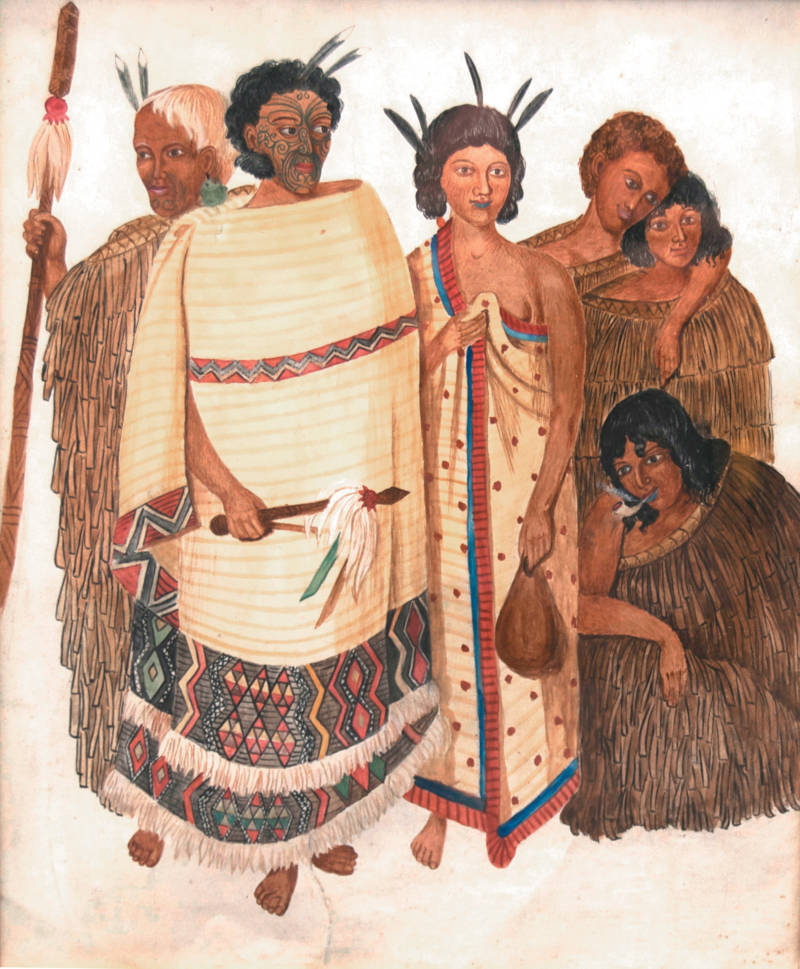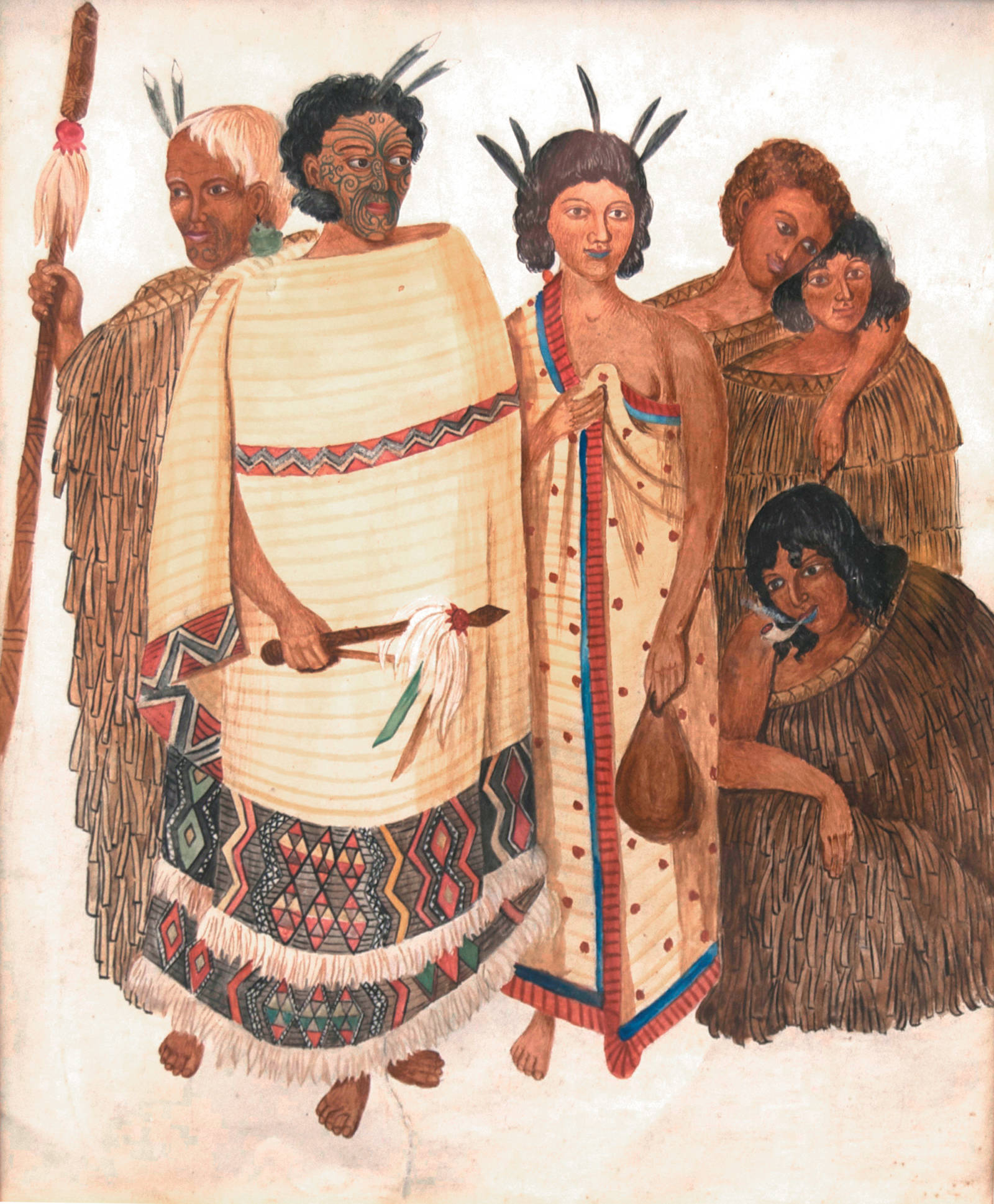MERRETT, Joseph Jenner;
Hōne Heke and His Wife Harriet with Four Attendants
c.1845
Watercolour on paper
270 x 220mm (image); 515 x 430mm (frame)

The following two texts were written for Te Huringa/Turning Points and reflect the curatorial approach taken for that exhibition.
Peter Shaw
Merrett is believed to have paid visits from Sydney to the Bay of Islands in the late 1830s. Later, he went to Tāmaki Makaurau, where he sought work as a surveyor, and then as a portrait and landscape painter, enjoying the patronage of Sir George Grey for a time. He also lived at Ngāmotu New Plymouth in 1851 and at Whanganui the following year. He died in Te Whanganui-a-Tara. A contemporary described him as ‘a sort of broken down gentleman who used to do a bit of watercolour drawing but who was never looked upon as an artist’.
Writing of Merrett’s specialty, pictures like these two featuring groups of Māori, Len Bell described the figures as being more like ‘figurines’. They are ‘often draped langorously against one another, are doll-like, with stereotyped, sweet and harmless expressions. They are little more than decorative knick-knacks—naïvely charming, but unrelated to the social and psychological realities of Māori life in the 1840s.’
Jo Diamond
These colourful yet rather naïve representations, one of the notable Ngāpuhi rangatira Hōne Wiremu Heke Pōkai, his wife Hariata, and accompanying entourage, and the other of a group of unidentified Māori women, are placed under the theme of taonga, despite their equally important relationship to other themes in this exhibition, including Mana-a-iwi.
Heke’s mana is conveyed primarily through the various taonga he and his entourage are wearing. The highly ornate kaitaka cloak with its exquisite tāniko borders is one example, as is the feathered adze he is holding and the huia feather adorning his head. The hieke rain cape and taiaha borne by the figure immediately behind Heke, most likely the elder rangatira Kawiti, are also highly valued taonga.
In the other picture, such detailed emphasis on the kākahu (cloaks), ranging from korowai to hieke, is augmented again by huia feathers worn in the hair. Devoid of background scenery, these pictures document the material taonga, rather than the wearer’s biography, bearing in mind that in Māori culture both people and material possessions may be considered as taonga.
No doubt, artistic license entered into Merrett’s work, determining composition style and colour, for example. None the less, these detailed and somewhat extravagant paintings provide a valued record not only of how notable Māori people dressed but also how they were remembered and frequently represented by colonial artists. Their impressive characters live on far beyond their lifetimes, thanks to Merrett’s efforts and those of numerous other artists. Most significant, too, is the fact that in many Māori people’s eyes these people and their material accoutrements, not to mention this picture itself, all constitute highly valued taonga tuku iho (lasting heirlooms) for gaze and wonderment of present and future generations.
Exhibition History
Te Huringa/Turning Points: Pākehā Colonisation and Māori Empowerment, Sarjeant Gallery Te Whare o Rehua, Whanganui, 8 April to 16 July 2006 (toured)
Provenance
?
Fletcher Trust Collection, purchased from John Leech Gallery, Tāmaki Makaurau

